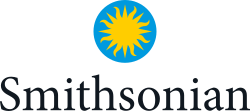
The National Numismatic Collection is the national coin cabinet of the United States. The collection is part of the Smithsonian Institution's National Museum of American History.

The National Numismatic Collection is the national coin cabinet of the United States. The collection is part of the Smithsonian Institution's National Museum of American History.

The National Numismatic Collection comprises approximately 1.6 million objects and is one of the world's largest and most diverse collections of coins, paper currency, medals, commodity currencies, financial instruments, exonumia, and related items. [1] As the collection of record for the U.S. monetary system, it holds the collections of the U.S. Mint, Treasury, and Bureau of Engraving and Printing. In addition, it includes collections donated by individual collectors and private institutions, such as the collection of the Chase Manhattan Bank Money Museum. [2]
Until 2004, the exhibit housing the Collection was the last surviving exhibit from the Smithsonian Institution's National Museum of American History's original 1964 arrangement. In late 2004, the exhibit was closed, and the objects were returned to the Smithsonian's vaults. In 2015, the museum opened a new permanent Gallery of Numismatics with an exhibition titled The Value of Money.
